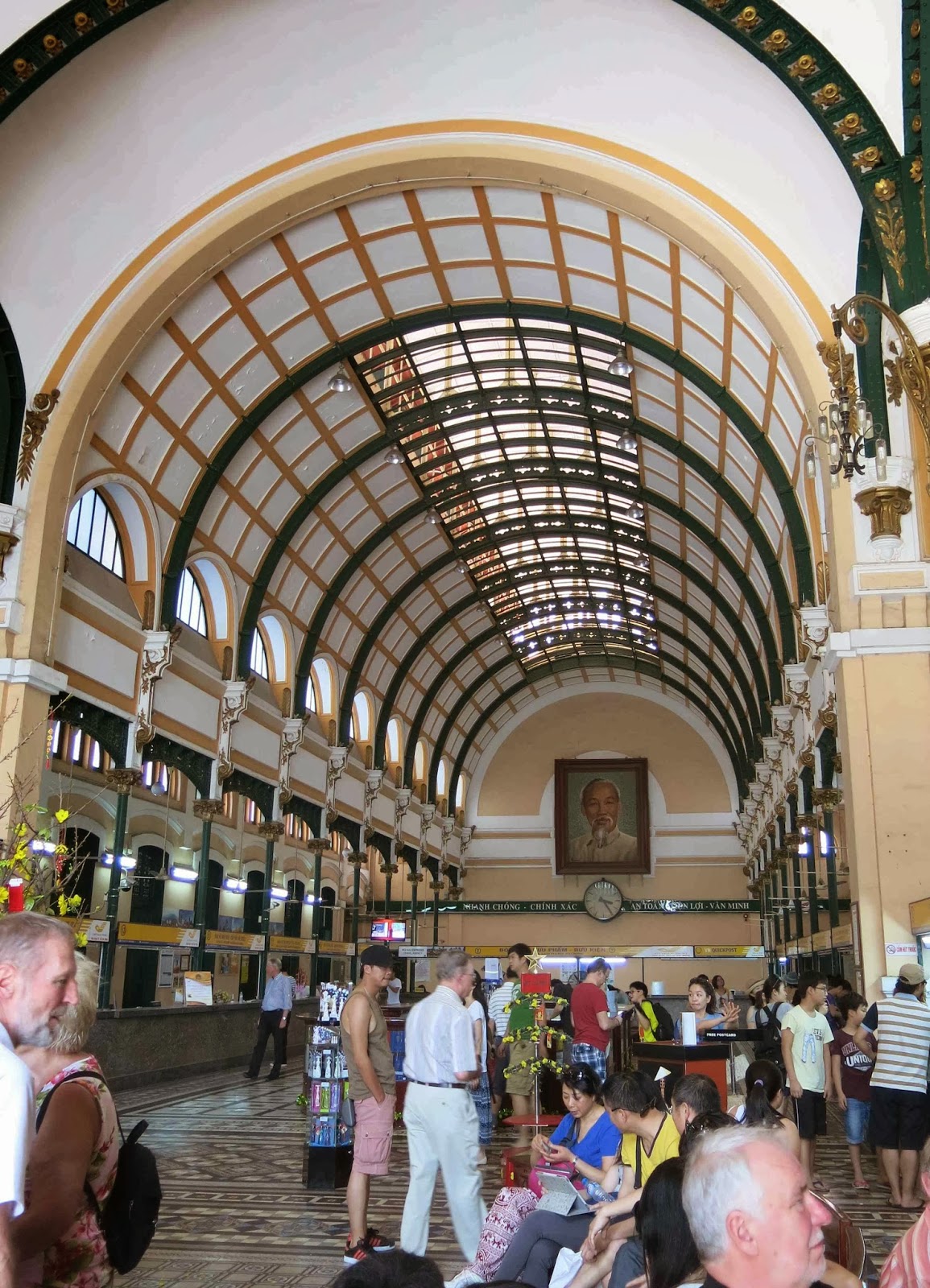Sunday, 2 February 2014
We've spent the past four days here in Ho Chi Minh City (HCMC). Formerly known as Saigon, the city served as the capital of Indochina while under French occupation and then as the capital of South Vietnam until the end of the war. It was at the end of the war, once the North overcame the South that Saigon was renamed although, sadly, Uncle Ho did not live to see the reunification of the country.
We timed our arrival into the city to coincide with the annual Tet. Tet means 'festival' and it marks the beginning of the new year in the Lunar Calendar. If that wasn't enough reason to celebrate, all Vietnamese also turn one year older so it's one big gigantic celebration! While many businesses close over Tet, the city is still very much alive with colour and people on the move, gathering with friends and family to mark the four day event.
(A dragon dance performance outside a department store in the city)
Thursday, was Tet Eve. We met Tina and Tim for dinner and then the four of us headed out to the streets to see how local people bring in the new year. There was live music, dragon dancing, light displays and lots and lots of people. Shortly after midnight, a fireworks display began and we welcomed in a new year for the second time on our travels.
(A dragon ready to pounce)
(Crowds gather at a busy intersection, waiting for the fireworks display to begin)
(The People's Committee Building at night)
HCMC has many tourist attractions and we've spent some time exploring a few. We visited the old Post Office building which has a couple of large, beautiful hand painted maps of the city and the country, dating back as far as 1892.
(We passed this photograph on display outside a building site and wondered how we could avoid getting eaten!!)
We visited the War Remnants Museum one morning. Unlike many history museums that in some way seem to glorify war with their displays of polished weapons and brushed uniforms, the War Remnants Museum touched on the reality of war by showing such things as the cramped barbed-wire cages in which prisoners were kept and detailed, stomach turning descriptions and photographs of the methods of torture used on prisoners. It was an insight into the inhumanity, senselessness and waste of war. One of the exhibitions we visited was a collection of photographs taken by war correspondents during the Vietnam/American War. The photos were so vivid and it was as a result of the work of men such as Larry Burrows that the world sat up and took notice of the atrocities going on in Vietnam at that time. Many of those photographers were casualties of the war they were documenting. The whole experience was very sad and left us wondering how it is that we still haven't learnt from history and that we continue to fight each other.
Another site that we visited was the Reunification Palace. The Vietnam/American War ended when the North took Saigon on 30 April 1975. On that day, a tank of the North Vietnamese army bulldozed through the gates of the Norodom Palace, forcing the surrender of the South's President. The Palace which was previously home to the French Governor, thereafter became known as Reunification Palace. Having been rebuilt in the early 1960s following a bombing which was an assassination attempt on the then President, it was rebuilt under the guidance of award winning architect Ngo Viet Thu. It has been left in much the same way as it was when it was home to the President of South Vietnam and it is like stepping back in time as you walk through the grand hallways.
(Clockwise from top left: The Palace; red marks the spot where two bombs were dropped in a failed assassination attempt; the tank which stormed the Palace; looking out of the city from the Palace)
(Left: The State Banquet Hall; Right: The Committee Room)
(Clockwise from top left: A painting by the Palace architect depicting a scene from a poem about national unity;
the War Room; the in-house cinema; the reception room where foreign ambassadors were received)
Today we went in search of China Town, in the Cholon District. As shop names and street signs began to include Chinese characters, we realised we were getting closer. Amongst the Soviet style buildings and old run down colonial era buildings, we came across some highly decorative old temples, one built in 1789. We also came across a Cao Dai temple. Cao Daism was established in Vietnam in 1926 and borrows from other religions including Christianity, Buddhism and Taoism. They have a Pope and female cardinals and Victor Hugo (author of Les Miserables) is one of their saints.
(An old market building in China Town)
(Offerings that are purchased for deceased family members)
(Dragon costumes for sale)
(Old Soviet style housing)
(Some of the temples we came across in China Town)
(A Cao Dai temple)
Tomorrow we have an early rise for a tour of the Cu Chi tunnels, where the residents of Cu Chi lived during the war. It'll be good to see some other parts of the city on the journey out to Cu Chi.



















No comments:
Post a Comment